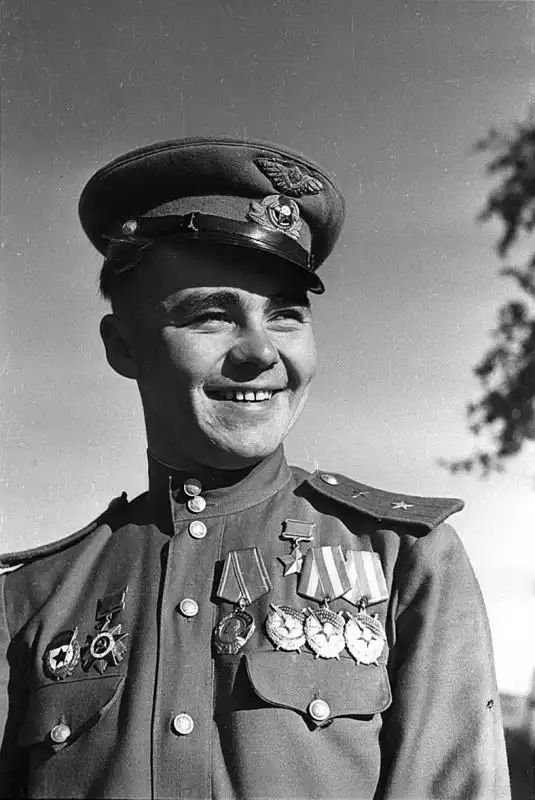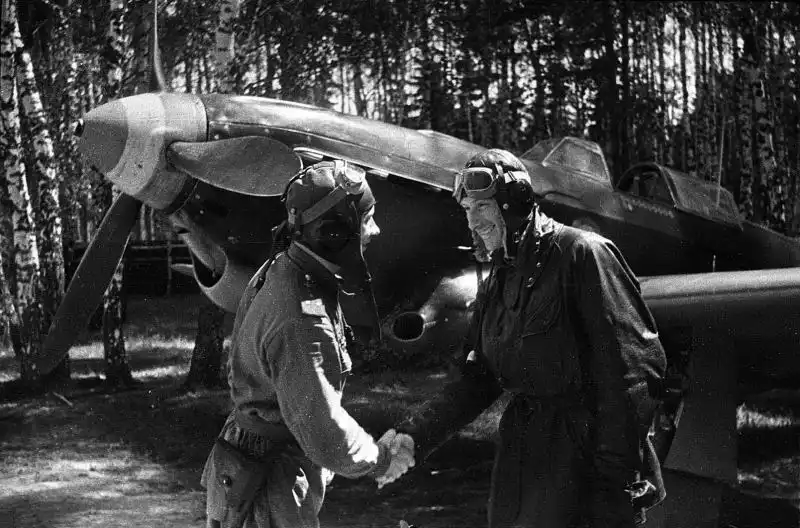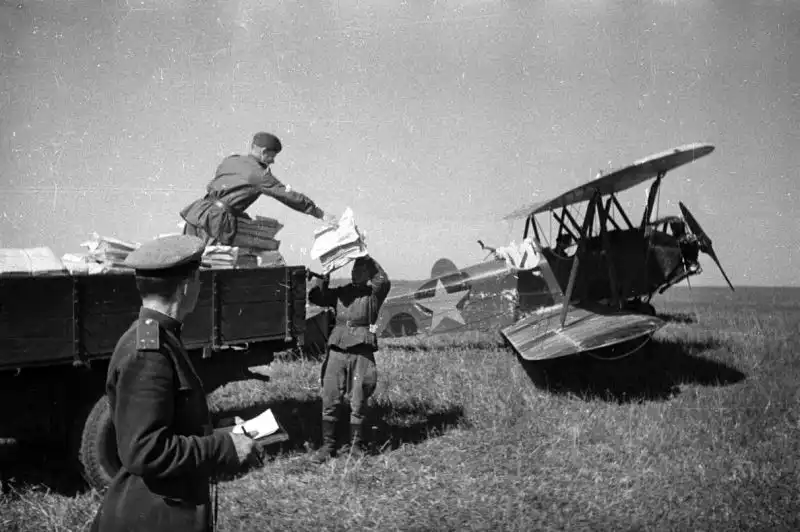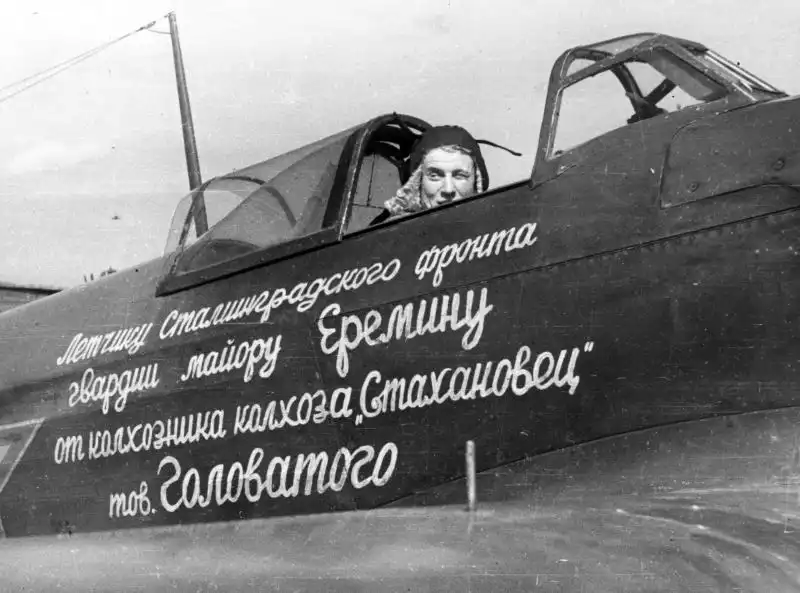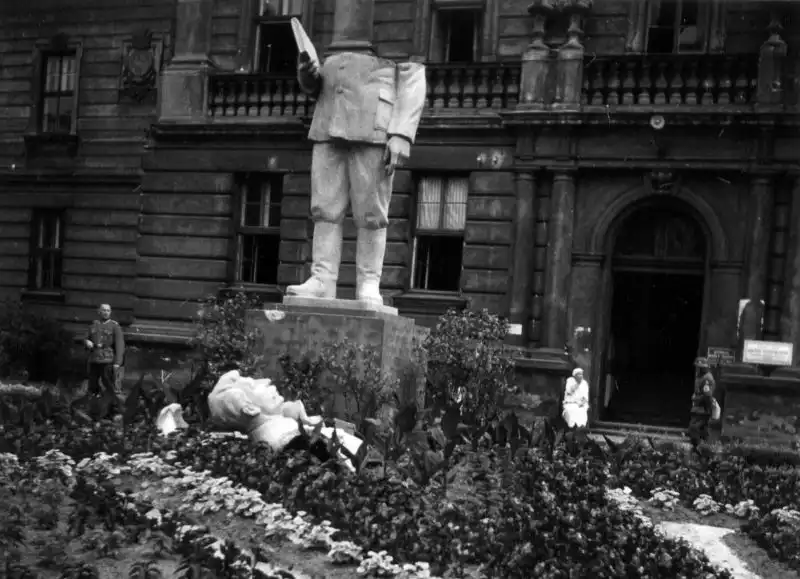Wreckage of Soviet IL-2 Attack Aircraft Near a Village House, Smolensk, Autumn 1941
September 25, 2025 - Reading time: 4 minutes
Wreckage of Soviet IL-2 attack aircraft near a village house, Smolensk region, autumn 1941, showing separation of wooden rear fuselage from armored front.
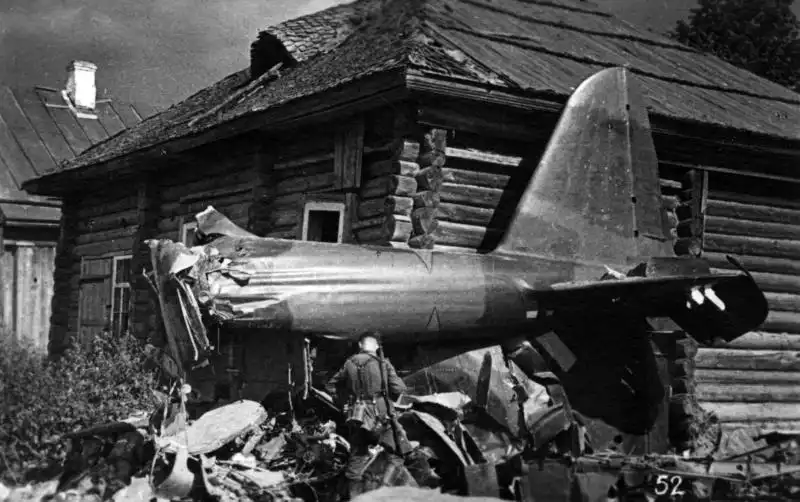
This wartime photograph captures a German soldier examining the wreckage of a Soviet Ilyushin IL-2 attack aircraft beside a village house, located in the Smolensk region, USSR, during autumn 1941. The aircraft is visibly damaged, with the wooden rear fuselage separated from its armored portion—an infamous weakness of early IL-2 designs.
Design and Construction of the IL-2 “Flying Tank”
The IL-2 was known as the Soviet “flying tank” due to the heavy armor protecting critical components such as the engine, cockpit, and fuel tanks. However, early models had a mixed construction: the rear fuselage, tail section, and parts beyond the armored cockpit were built using wood (plywood/veneer over frame).
Vulnerabilities in Battle
Because wood is lighter and easier to produce than metal, especially under wartime pressures, it was used for non-armored sections. This made the rear fuselage susceptible to damage: once structural integrity was compromised (by bullets, shrapnel, or heavy damage), the wooden rear section could detach or collapse, separating from the armored cockpit and engine block. The photo appears to show just such detachment.
Historical Context—Autumn 1941
In autumn 1941, German forces had advanced deep into Soviet territory. The Luftwaffe, ground-based anti-aircraft weapons, and even infantry fire posed serious threats to Soviet attack aircraft. The IL-2s were frequently flying close support and ground attack missions, exposing them to heavy ground fire. Under such conditions, a design flaw in vulnerable rear fuselage sections could contribute to the aircraft being rendered unflyable.
The location—Khislavichi, Smolensk Oblast—saw intense fighting during that period. Soviet units attempted counterattacks and defense, while German forces pressed forward. Many IL-2s were lost in such engagements, either destroyed in aerial combat or by ground fire.
Technical photo data:
📍 Location: Khislavichi, Smolensk region, USSR
📅 Date: Autumn 1941
📝 Event: German soldier inspects wrecked IL-2 attack aircraft, early Eastern Front battle damage
📷 Author: Unknown photographer
- Soviet IL-2 wooden rear fuselage
- IL-2 damage by ground fire 1941
- Wrecked IL-2 Smolensk autumn
- Early IL-2 design weaknesses
- Ilyushin IL-2 frontline losses
- WWII Soviet ground attack aircraft
Category
Search
Categories
- Unidentified WWII Photos (14)
- World War II Photos 1937 (1)
- World War II Photos 1938 (1)
- World War II Photos 1939 (3)
- World War II Photos 1940 (5)
- World War II Photos 1941 (103)
- World War II Photos 1942 (60)
- World War II Photos 1943 (56)
- World War II Photos 1944 (77)
- World War II Photos 1945 (46)
- WWII and Postwar Photos 1946 (1)
